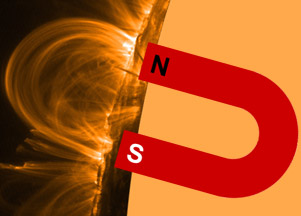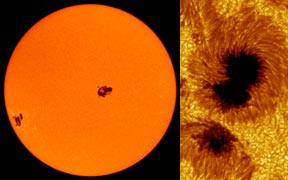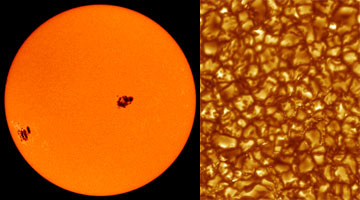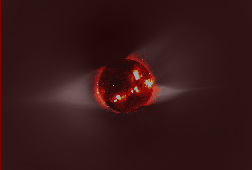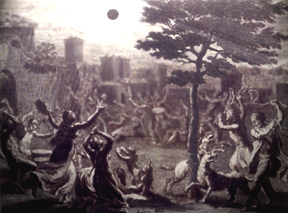Click on image for full size
Windows to the Universe original artwork by Randy Russell using an image from NASA's TRACE (Transition Region and Coronal Explorer) spacecraft.
Related links:
Movie: Journey Beneath a Sunspot
Movie: Magnetic Field Lines Tangle as Sun Rotates
Activity: Graphing Sunspot Cycles
Activity: Plotting Locations of Active Regions on the Sun
Activity: Tracking the Motion of an Active Sunspot Region
Movie: Supercomputer Models Help Scientists Understand Sunspots
Sunspots and Magnetic Fields
Sunspots are caused by very strong magnetic fields on the Sun. The best way to think about the very complicated process of sunspot formation is to think of magnetic "ropes" breaking through the visible surface (photosphere) of the Sun. Where the rope comes up from the solar surface is one sunspot and where the rope plunges into photosphere is another sunspot.
As you can see in the picture to the left, one sunspot has North magnetic polarity and one sunspot has South magnetic polarity.
Scientists believe the differential rotation of the Sun is the underlying cause of the magnetic ropes on the Sun. Since the gaseous sphere of the Sun rotates more quickly at its equator than at its poles, the Sun's overall magnetic field becomes distorted and twisted over time. The twisted field lines eventually come through the photosphere, showing their presence as sunspots.
When the tangled fields reach a "breaking point", like a rubber band that snaps when wound too tight, huge bursts of energy are released as the field lines reconnect. This can lead to solar flares and Coronal Mass Ejections (CMEs).


